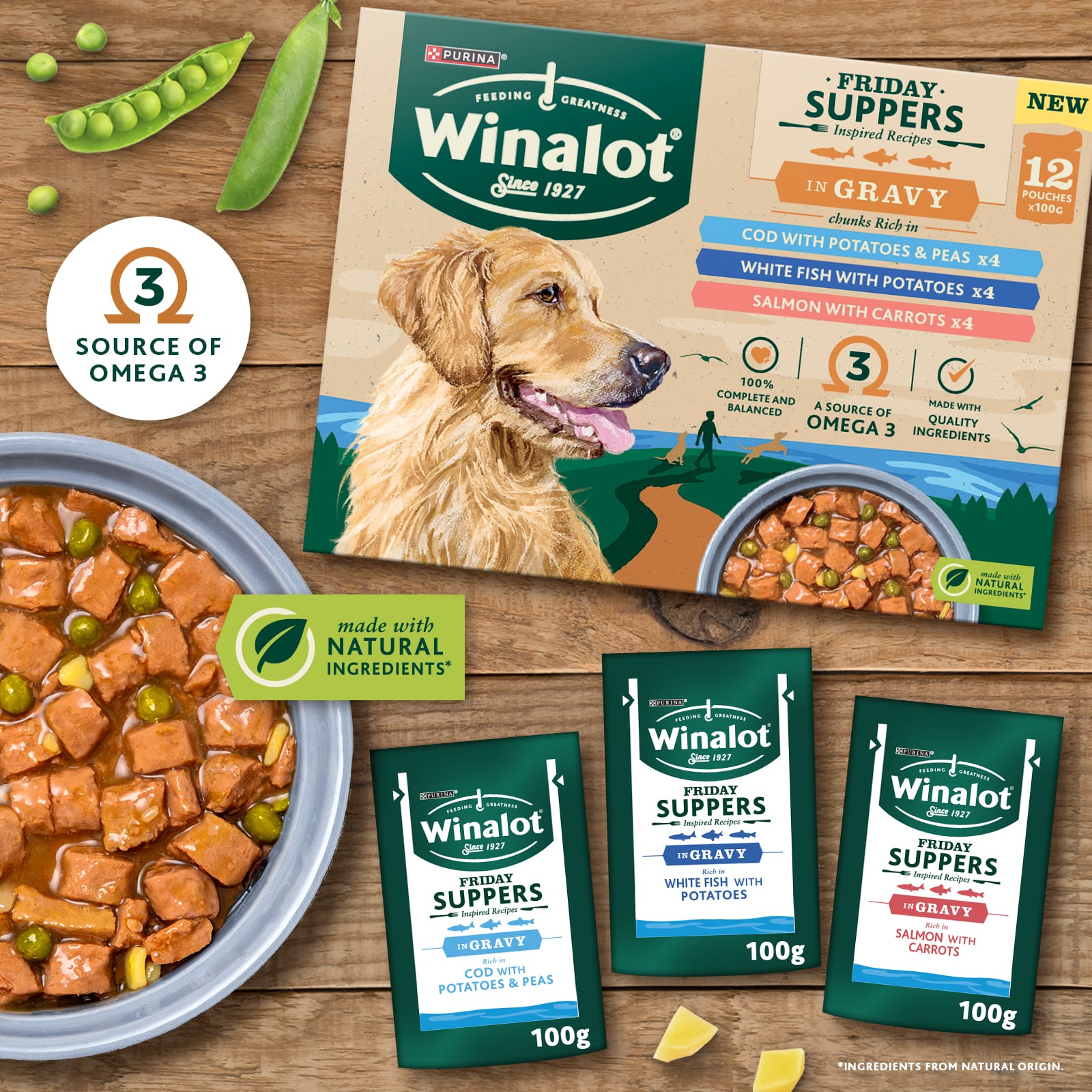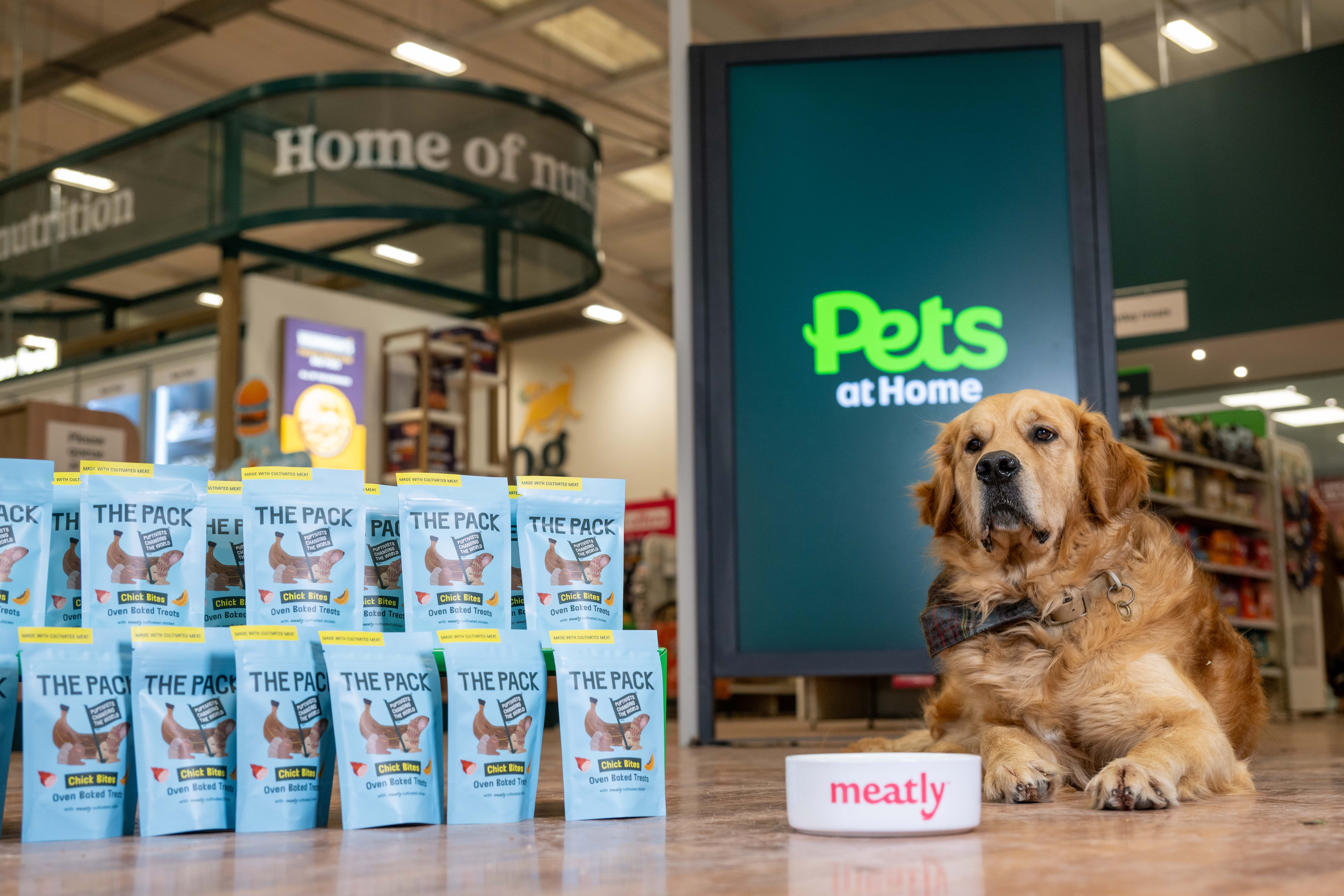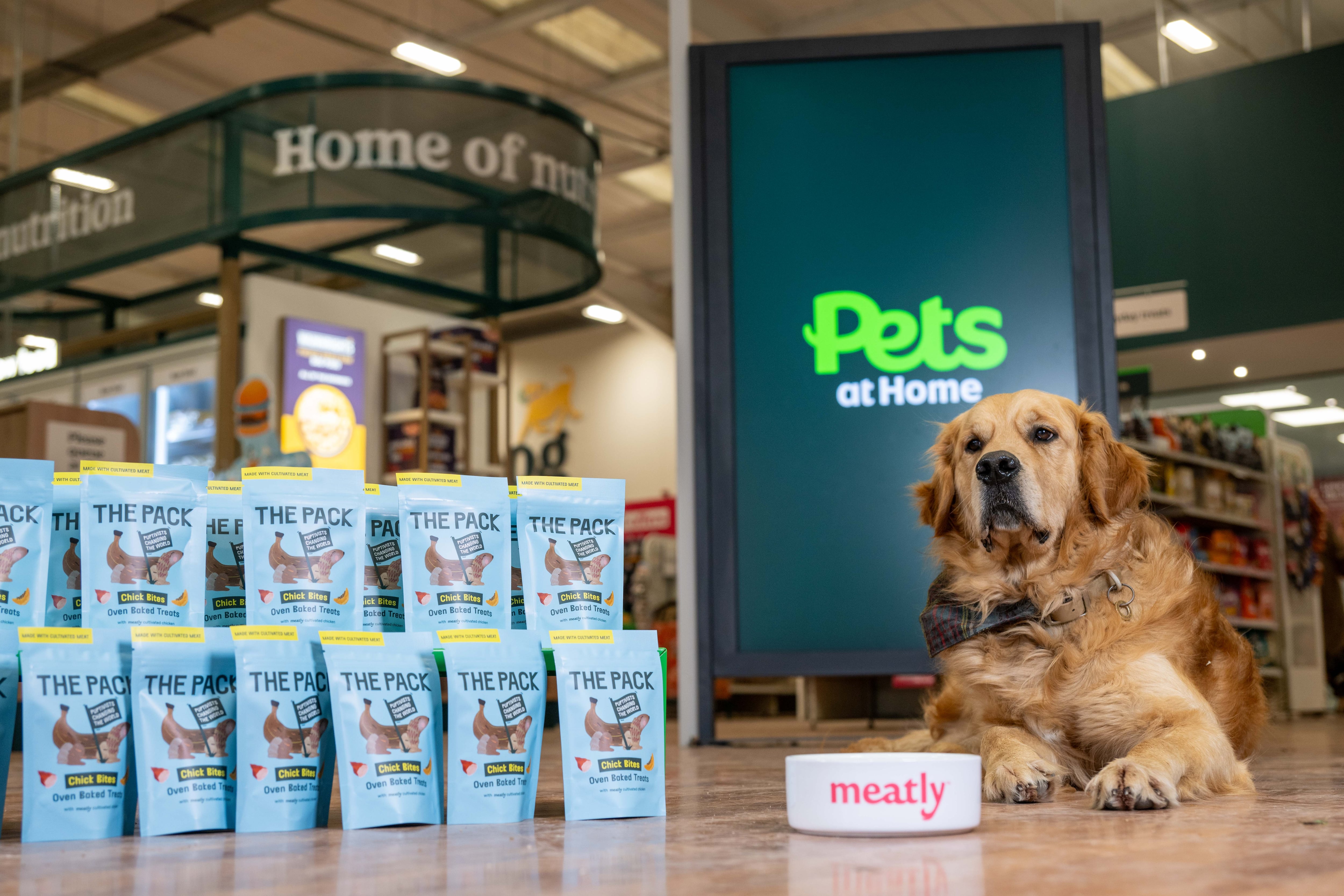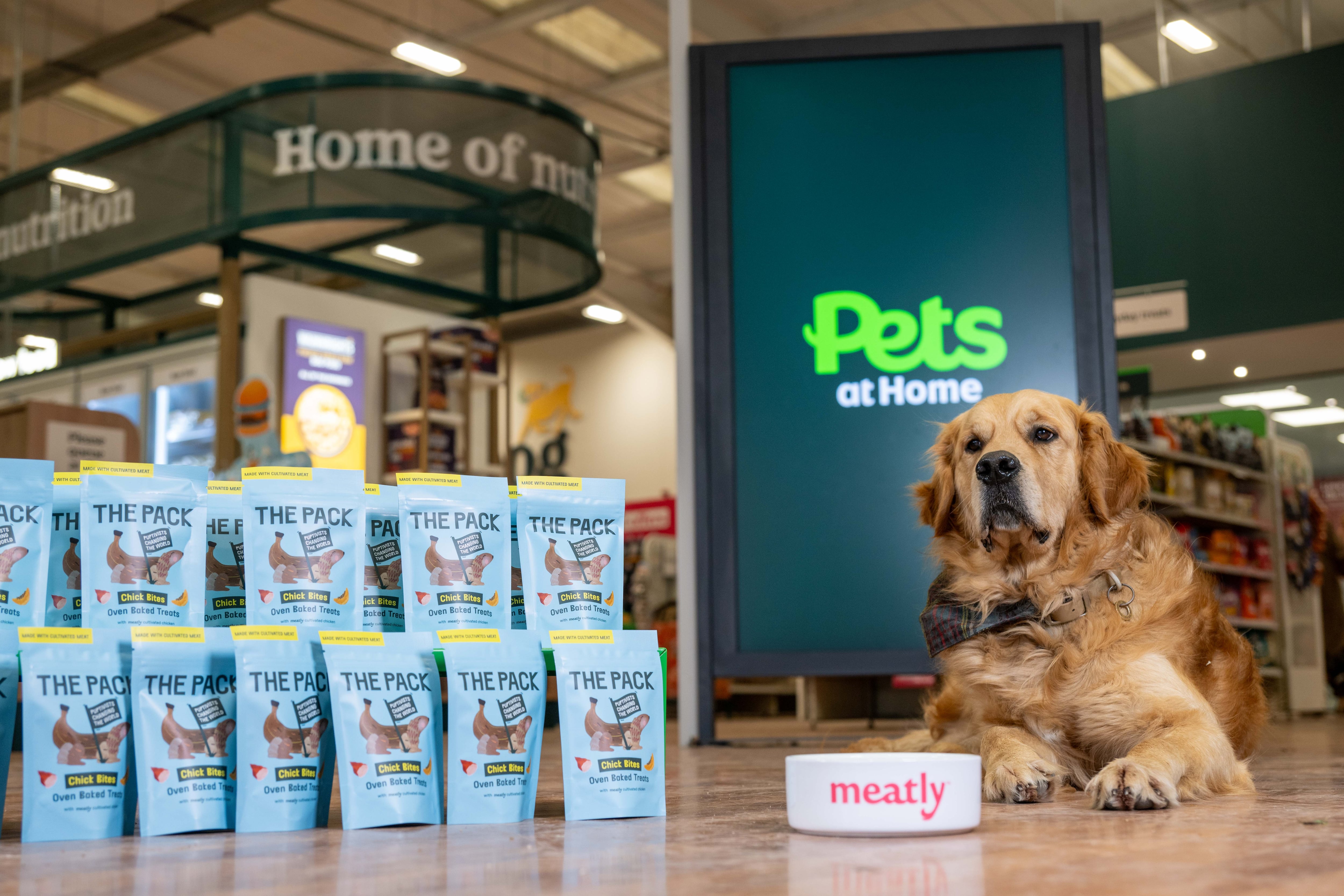The UK has the largest dog population (13.02 million) and one of the largest cat populations (11.71 million) in Europe (State of Pet Homelessness Project), with one in three UK households owning a dog and one in four, a cat (Behaviourally Transactional Path Study 2023).
It’s no surprise therefore that the pet care category has remained a significant FMCG driver for the grocery channel, especially since it’s one of the last categories shoppers will look to cut back spending on (Toluna March 2022 + Streetbees Inflation Tracker June 2022).
Commenting on the category, Adelina Bizoi, category and market activation director at Mars Petcare, told Food Manufacture: “With such a large proportion of shoppers enjoying pet ownership, it goes without saying that demands are varied from owner to owner, and pet to pet, so it’s crucial for retailers to be navigating the opportunity by offering choice.”
The big trends
Wellness and luxury
The wellness trend within pet food continues to grow, with Bizoi saying 2024 saw particular interest.
Research from Mars petcare brand James Wellbeloved found that 79% of dog owners take as much care over what they serve their four-legged friend as they do with their own meals.
The majority (91%) say ingredients are an important factor in their purchasing decisions, with 8 in 10 more likely to buy pet food if it contains ‘natural’ ingredients. Nutritional value is another top priority for 39% of dog owners when shopping for pet food, followed by a trusted brand (25%).
As part of its strategy to futureproof its pet care category, Mars is teaming wellness with luxury, as health and indulgence become big asks.

Luxury-end products within cat main meals saw its shares grow by 70 bps, according to Bizoi, whilst products that aspire to bond their pets and owners saw 3% better growth vs. the market at large in 2024.
But the company is also focused on recruiting owners of young pets with premium wellness offerings, as a way to futureproof its place in the category going forwards.
This is a tactic particularly relevant for cat owners.
“This is due to kittens making up 14% of the cat population, with one in three owners not changing the food they feed their pet since getting them,” explained Bizoi.
“As a result, we expanded our portfolio of meals back in May 2024 with the launch of our new, first ever Sheba Kitten range to drive lifelong value through premiumisation of the Cat Wet segment.”
Available in two SKUs – Mixed Selection and Chicken & Salmon, the range provides an accessible yet premium proposition for retailers and has been carefully designed for kittens with grain free bite sizes, natural ingredients, vitamins, minerals and natural chunk and gravy colours.
“Not only will the nutritional and taste benefits please kittens and their parents, but the range will recruit shoppers into the Sheba brand as early as possible within their pet’s lifespan. This will increase their chances of remaining loyal shoppers through adulthood as Sheba products become preferred by their pet, ultimately helping retailers to attract and retain sales long-term,” said Bizoi.
Speaking on the wider pet food category and health, Bizio added that superfoods have become a “highly relevant” segment.
She points to Pedigree Ranchos Superfoods and Pedigree Multivitamins as examples within the Mars Petcare portfolio.
“The launch of Pedigree Multivitamins follows findings that showed a gap in the market for dog supplements in soft chew format that are easy to give to dogs. In fact, only 10% of supplements were available in a convenient chew format at the time of launch,” she noted.
The demand for health and natural ingredients was also highlighted as a key trend by the experts at Nestlé.
“Natural offerings continue to be one of the key growth engines of overall pet food across all categories. This helped natural and other similar ideological based offerings outpace market growth by four percentage points in 2024,” explained Ben Duncan, Purina’s marketing director for Nestlé UK & Ireland.
Duncan also noted the demand for scientifically backed options, adding that this is of particular importance to cat owners.
“In Dry Cat, the advanced health segment was the only one to grow in an otherwise shrinking Circana Grocery market (increasing 0.2% in a market that contracted 1.2%, increasing its share of dry cat by nearly 60 bps). In single serve Wet Cat, advanced health grew at a rate 9.6% greater than the overall market,” he continued.
Sustainability
Pet food made with by-products
Alongside nutrition, there is an ever-growing demand for sustainability too.
“Insights from Mars Global Pet Parent Study revealed that sustainability is a key consideration for pet parents. 45% of cat or dog owners considered sustainability as very important when purchasing pet food, this sentiment is particularly strong among Generation Z, indicating a shift towards more sustainable and ethically produced products,” Michael Horan, global S&T platform leader material science at Mars Petcare told Food Manufacture.
To drive innovation in this area, Mars Pet Care and EIT Food launched the ‘Fiber Valorisation for Pet Food Challenge’. This invited organisations to submit solutions which could transform byproducts from agricultural processing into proteins or sugars that can be digested by dogs and cats for potential use in safe and nutritious pet food formulations.
After a competitive process, R&D leaders from Mars Petcare met nine organisations at a demo day, selected from over 50 applications from a range of startups, research institutes and established companies. Two organisations were then selected for proof-of-concept studies as a first step, with the potential to develop future long-term collaborations.
One company is BioscienZ, which develops processes using micro-organisms in an applied setting to produce new food and feed ingredients, industrial products, pharmaceuticals and cosmetics.
With the support of Mars Petcare, BioscienZ will investigate the value of using enzymatically converted solid fibrous raw materials as ingredients in liquid pet food, by employing an innovative proprietary liquefaction process.
The other winner is Cremer Sustainable Nutrition, part of the Cremer group; a family-owned group of more than 60 companies worldwide, specialising in nutrition, oleochemicals, trading and logistics services.
Cremer Sustainable Nutrition has developed a process that improves the digestibility and taste of plant fibres in animal feed by combining traditional proven technology with innovate solid-state fermentation. They will develop this process further and test its applicability in the pet food market.
However, recent trends centred around the humanisation of pet food has the potential to move us away from these practices, with pets starting to eat more human grade cuts thereby affording less opportunities to upcycle waste streams.
Still, pet owners are keeping sustainability top of mind, with a 2019 pet food industry survey showing that 28% of respondents aged 18-34 express an interest in seeing more sustainably sourced pet food.
One option that has recently come to the forefront is lab grown pet food.
The market for cultivated pet food
This year saw the world’s first cultivated meat dog treat go on sale at Pets at Home. After gaining UK regulatory approval for its cultivated meat in July 2024, Meatly teamed up with plant-based fog food brand The Pack to roll out a limited-release of ‘Chick Bites’ – made from plant-based ingredients and cultivated chicken.
“Meatly chicken tastes exactly the same as traditional chicken, and our process is carefully monitored to make sure no unwanted chemicals, bacteria, or other nasties can get into our meat. It’s just pure chicken. Nothing else,” said Owen Ensor, CEO of Meatly.

“Our chicken also offers the same nutritional values, too, and we can make meat in a way which has far less impact on the planet and is kinder to animals. Cultivated chicken uses up to 64% less land, 28% less blue water, and produces fewer CO₂ emissions and pollution. Once scaled, we also expect our product to reach price parity, meaning the choice will become even easier for climate and health-conscious consumers.”
And innovation within the cultured pet food space is picking up pace, with the EU greenlighting the sale of animal cell-cultured ingredients from BioCraft just a few months after Meatly’s success.
BiCraft has since signed a deal with the Romania headquartered, Prefera Petfood, to create a 99% animal cell-cultured ‘mouse mousse’.
BioCraft’s animal-cell cultured ingredient provides the basic nutrients essential for cats and dogs, but offers additional functional advantages for pet health, including a hypoallergenic protein source and a omega-6 to omega-3 fatty acid ratio that it claim is superior to traditional meat.
Commenting on the forthcoming cat product, BioCraft founder and CEO Dr Shannon Falconer said: “Achieving a near 100 percent inclusion level of an animal cell-cultured ingredient for a final product is a game-changer for the pet food industry.
“Most cellular agriculture initiatives struggle to reach high inclusion levels of their ingredient in a final product; however, low inclusion levels don’t accomplish the objective of reducing our reliance on intensive animal agriculture.
BioCraft reports that early palatability tests have demonstrated ‘exceptional acceptance rates’ among cats, with taste trials showing strong preference for cell-cultured mouse mousse over conventional alternatives.
Lab grown acceptance among pet owners
But will pet owners actually buy into it?
An academic study, ‘Investigating the market for cultivated meat as pet food: A survey analysis’ published in online journal Plos One, highlighted the potential for a distinctly different market environment for cultured pet food versus lab grown meat for human consumption.
Although not all our respondents willing to eat cultivated meat would feed it to their companions a lab grown version, the research showed a large majority (81.4%) were in favour.
Perhaps unsurprisingly, vegans and vegetarians were less inclined to eat cultured meat than meat-eaters (16.4% vs 40.3%). However, what is interesting is that among the vegan and vegetarians who would not consume it, more than half (55.9%) said they would still feed it to their pets.
This is in stark contrast to the meat-eating community, with just 9.6% saying they’d feed it to their companions but not themselves.
Among the key reasons for not feeding cultivated meat to pets were worries over health, which the authors noted as a potential opportunity for those operating in this market to address.
What does the future hold?
“We’re not just stopping with our recent launch of cultivated meat pet treats, we’re actively looking to expand our products across Europe and eventually into Canada and the US, bringing our sustainable and ethical pet food options to a wider consumer audience,” Ensor said on the future of Meatly’s pet food journey.
Mars Petcare has invested in cultured meat, partnering with dog brand Wild Earth back in 2018. More recently it teamed up with Big Idea Ventures to launch the Next Generation Pet Food Program. This initiative, whilst not cultured meat focused, aims to drive innovation in pet food and engage with the start-up ecosystem to develop more sustainable solutions.
For Mars Petcare,’s Bizoi’s the near-future will continue to be focused on health.
“Over the coming year, we expect to see trends such as health and supplements continue to grow in momentum as more consumers take a proactive approach to their pets health. Through this, with supplements being a trend that is here to stay in both the human and animal worlds, we expect to see an increase in shoppers looking for options that can support their dog’s everyday health,” she said.
“Alongside this, we expect to see a continued demand for premium options as shoppers look to upgrade their pet’s food or treats with something they perceive to be higher quality and more enjoyable for their furry companion.”
Meanwhile, Nestlé UK & Ireland is yet to venture into lab grown pet food, but Duncan said the business welcomes new advancements and has “noted with interest” the approval of cultivated meat for use as a pet food ingredient in the UK last year.
“We will keep a close eye on the research and development of this innovative protein,” Duncan concluded.





